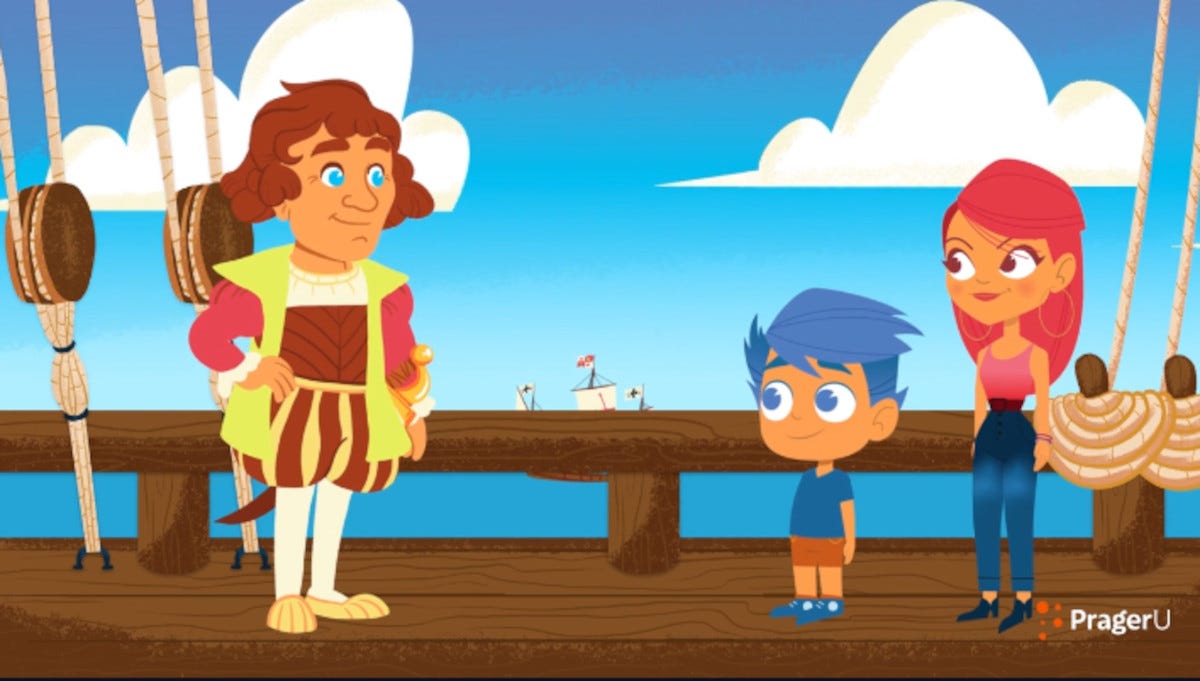PragerU cartoon approved for use in Florida public schools suggests slavery isn’t always wrong
Other videos distort history; one says slavery legalization helped U.S. ‘achieve something great’
The words coming out of Christopher Columbus’s mouth in a cartoon that has been approved by the Florida Department of Education for showing in elementary schools are shocking: Talking to two American schoolchildren who had used a time machine to visit him in 1493, Colu…


